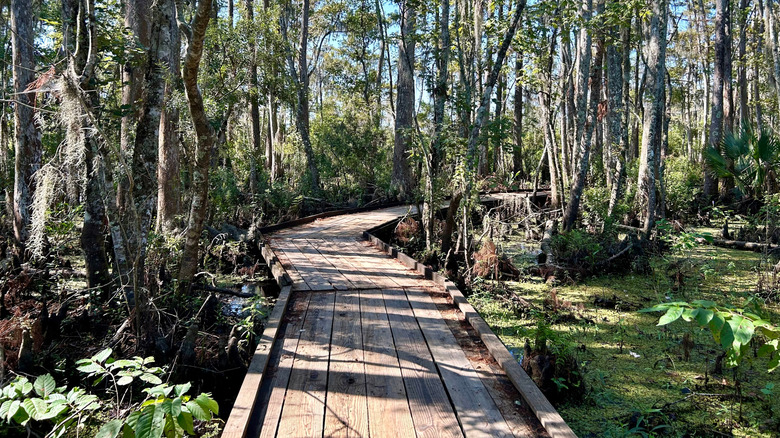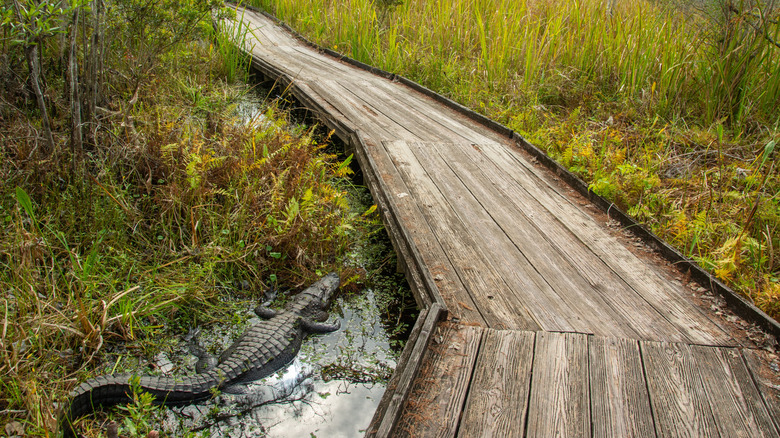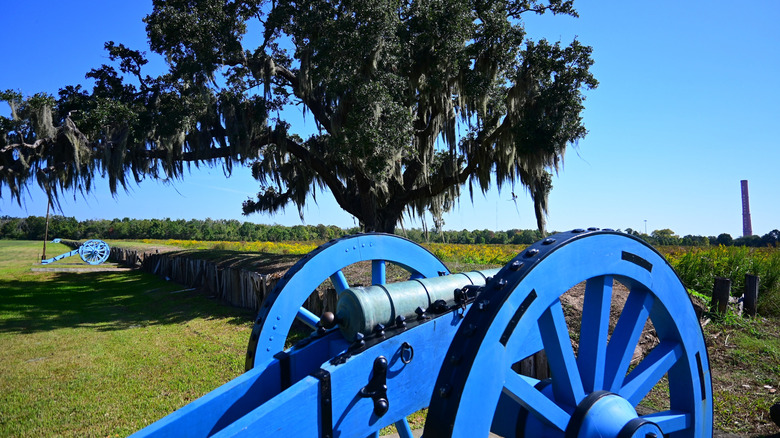Explore Louisiana's Wild Wetlands At A Scenic Wildlife-Filled Swamp With Accessible Boardwalk Trails
A wild and watery preserve situated just half an hour south of New Orleans offers visitors to the Big Easy a simple diversion away from the city's endless party scene. Here, at the Barataria Preserve and its encompassing Jean Lafitte National Historical Park and Preserve, they can breathe some fresh air and see what South Louisiana was like hundreds of years ago, before European settlements forever altered the swamps and forests of this venerable region. Visitors can get a taste of South Louisiana's natural state, where scenic spots like the Atchafalaya Basin, America's largest swamp and a total paradise for wildlife lovers, is located.
Thanks to a handy network of trails and boardwalks, guests at the federally managed preserve can wander beneath the moss-draped cypress trees and take in the sights and sounds of the swamp. Birders and wildlife watchers will love the experience that puts them in the swamp without having to actually get in the swamp. The preserve is also a close-to-the-city fishing destination where anglers can use canoes and pirogues (small, shallow-draft rowboats pronounced PEE-ROES) to go after bass, catfish, and sunfish. History buffs will get a kick out of the park, too. Here, they can bone up on American history and their pirate lore — Jean Lafitte, the park's namesake, was an infamous pirate and slave trader in the early 1800s.
Experience south Louisiana's incredible wildlife
From the preserve's visitor center near the intersection of Louisiana highways 45 and 3134, guests can wander along any of five maintained walking trails. From these boardwalks that stretch anywhere from a short stroll, like the Visitor Center Trail, to nearly a mile, like the Palmetto Trail, hikers can experience a true Southern cypress swamp. As for birders, they can see more than 200 species. Birding is productive in the spring and fall, because the 23,000-acre preserve is located right in the middle of the Mississippi Flyway — a migratory bird highway. Guests can see great blue herons, egrets, and ibis, as well as barred owls, a host of woodpecker species, northern cardinals, and blue-gray gnatcatchers.
But birds aren't the only critters in the preserve. As one might suspect in a South Louisiana swamp, there are more charismatic animals about. The preserve is home to a very healthy and often visible population of American alligators, as well as other predators, like bobcats and coyotes. Nine-banded armadillos are seen during the day, and a host of reptiles and amphibians, from water snakes to tree frogs, are often viewed as well. With the help of the elevated boardwalks stretched throughout the swamp, a trip to the preserve can be a day-long adventure for anyone interested in seeing the real landscape of South Louisiana. A visit to the preserve could easily be one of the unmissable things to do on a vacation in New Orleans.
The preserve is more than just a natural wonder
The Barataria Preserve is just one of six sites located within the Jean Lafitte National Historical Park and Preserve. The haughty pirate and slave trader for whom the park is named left an indelible mark on New Orleans and surrounding swamplands, where he plied his illicit trades. The sites are spread throughout the region, and ambitious history buffs could easily stretch a day into a weekend as they learn about Lafitte's nefarious activities and the unique history of South Louisiana.
From the Barataria Preserve, visitors can drive about 45 minutes back into New Orleans to the Chalmette Battlefield and Chalmette National Cemetery. This is the sight of Gen. Andrew Jackson's famous victory over the British in the Battle of New Orleans in 1815. Located just a 25-minute drive from New Orleans' Garden District, which is home to lavish mansions and unique architecture, the site of the famed battle is a somber reminder of the oft-violent history of this corner of America. Here, too, are the graves of 14,000 Americans who fought in battles ranging from the War of 1812 to Vietnam.
Other sites within the Jean Lafitte National Historical Park and Preserve include the French Quarter Visitor Center and three separate cultural centers that honor the traditions and share the unique way of life that Acadian settlers, later known as Cajuns, from Nova Scotia created in the region when they migrated to South Louisiana in the mid-1700s. All told, the preserve is both ripe with nature and wildlife, and steeped in regional history, which makes it a unique inclusion on any trip to New Orleans.


